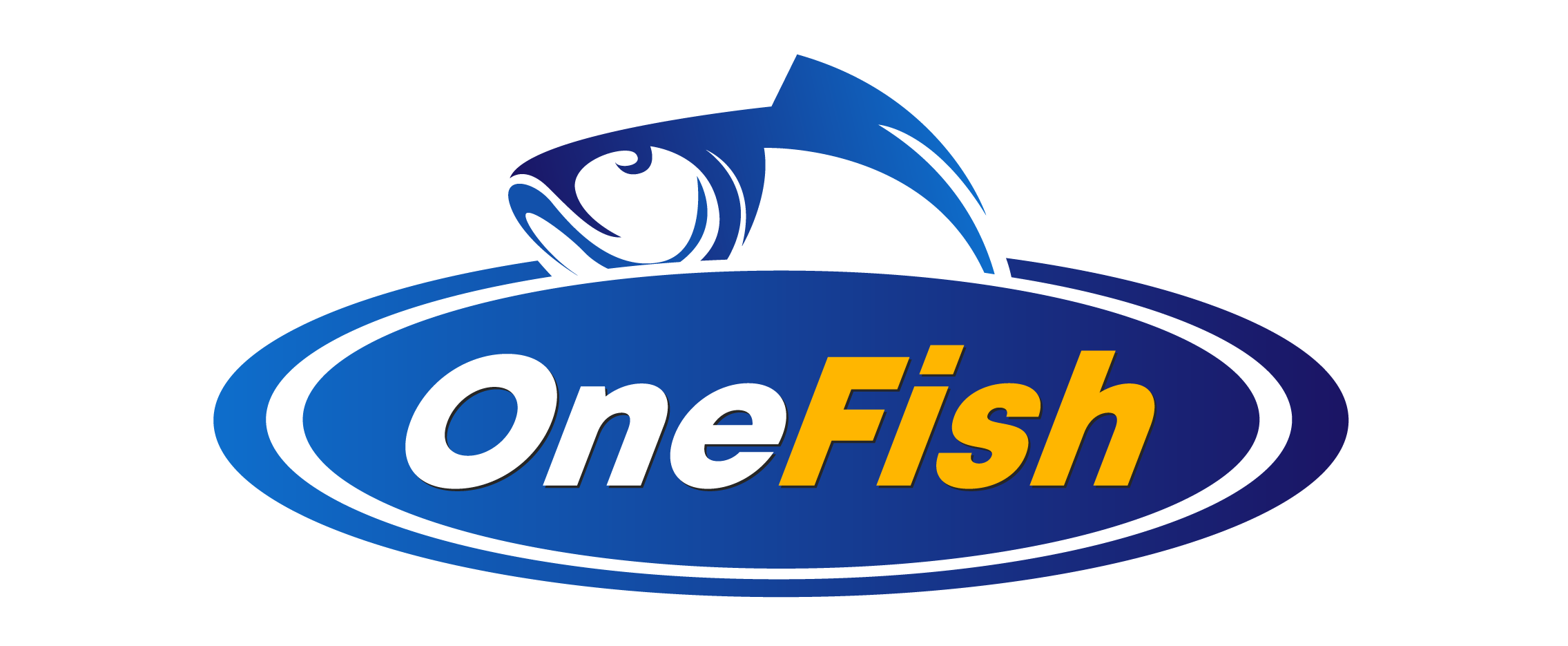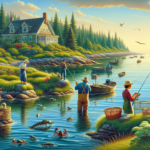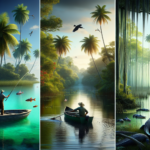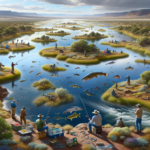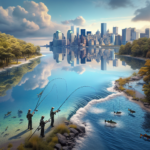Fishing in Maryland: Chesapeake Bay and Beyond
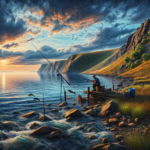
Introduction
Did you know that the Chesapeake Bay is the largest estuary in the United States, spanning over 64,000 square miles? This vast and diverse ecosystem offers some of the best fishing opportunities in Maryland and beyond. In this article, we will explore the rich fishing culture of Maryland, focusing on the Chesapeake Bay and other notable fishing spots. We will cover various fishing techniques, species information, top fishing locations, seasonal considerations, and much more. Whether you’re a seasoned angler or a beginner, this guide will provide valuable insights to enhance your fishing experience in Maryland.
Background/Context
Historical or Cultural Significance
The Chesapeake Bay has been a vital resource for centuries, supporting Native American tribes long before European settlers arrived. Fishing has always been a cornerstone of the local economy and culture. The Bay’s waters have provided sustenance, trade opportunities, and recreational activities for generations. Today, fishing remains a beloved pastime and a significant industry in Maryland.
Geographical Overview
The Chesapeake Bay stretches from Havre de Grace, Maryland, to Virginia Beach, Virginia. It is fed by over 150 rivers and streams, creating a unique brackish water environment that supports a diverse range of fish species. The Bay’s climate is generally mild, with hot summers and cool winters, making it an ideal fishing destination year-round. The surrounding topography includes marshlands, forests, and urban areas, offering a variety of fishing environments.
Key Points/Details
Fishing Techniques
Technique Overview
Maryland’s waters are suitable for various fishing techniques, including fly fishing, trolling, bottom fishing, and surf fishing. Each technique offers unique advantages depending on the target species and location.
When and Where to Use
Fly Fishing: Best for freshwater streams and rivers, particularly for trout and bass.
Trolling: Effective in deeper waters of the Chesapeake Bay for species like striped bass and bluefish.
Bottom Fishing: Ideal for catching catfish, flounder, and croaker in both freshwater and saltwater environments.
Surf Fishing: Perfect for coastal areas and beaches, targeting species like red drum and bluefish.
Recommended Gear
- Fly Fishing: Lightweight fly rods, floating lines, and artificial flies.
- Trolling: Medium to heavy rods, trolling reels, and lures like spoons and plugs.
- Bottom Fishing: Heavy-duty rods, spinning reels, and bait like worms or cut fish.
- Surf Fishing: Long surf rods, spinning reels, and bait like shrimp or squid.
Species Information
Species Overview
The Chesapeake Bay and Maryland’s waters are home to a variety of fish species, including striped bass (rockfish), bluefish, flounder, catfish, and trout. Each species has unique habits and preferred habitats.
Best Practices
Striped Bass: Use live bait or lures like bucktails and fish during early morning or late evening.
Bluefish: Cast spoons or plugs in deeper waters and be prepared for a strong fight.
Flounder: Drift fish with live minnows or squid near sandy bottoms.
Catfish: Use stink bait or chicken liver in freshwater rivers and lakes.
Trout: Fly fish with nymphs or dry flies in cold, clear streams.
Location Information
Top Fishing Spots
- Chesapeake Bay: Known for its diverse fish population and numerous access points.
- Deep Creek Lake: A freshwater lake offering excellent trout and bass fishing.
- Assateague Island: A prime location for surf fishing and catching red drum and bluefish.
- Gunpowder River: Ideal for fly fishing and targeting trout.
Regulations and Licenses
Maryland requires anglers to have a valid fishing license, which can be obtained online or at local retailers. Specific regulations, such as size and bag limits, vary by species and location. Always check the Maryland Department of Natural Resources website for the latest information.
Seasonal Considerations
Seasonal Variations
Fishing conditions in Maryland change with the seasons. Spring and fall are generally the best times for fishing, with mild temperatures and active fish. Summer can be productive but may require early morning or late evening trips to avoid the heat. Winter fishing is possible but often limited to hardy species like catfish and trout.
Best Times to Fish
Spring: Excellent for striped bass and trout.
Summer: Good for bluefish, flounder, and catfish.
Fall: Prime time for striped bass and bluefish.
Winter: Limited but possible for catfish and trout.
Events and Tournaments
Event Overview
Maryland hosts several fishing events and tournaments throughout the year, including the White Marlin Open in Ocean City and the Maryland Fishing Challenge. These events offer opportunities for anglers to compete, learn, and enjoy the camaraderie of the fishing community.
Preparation Tips
To prepare for a fishing event, ensure your gear is in top condition, practice your techniques, and familiarize yourself with the event rules and regulations. Arrive early to secure a good spot and stay hydrated and well-fed throughout the event.
Tips and Best Practices
General Tips
- Always check the weather forecast before heading out.
- Use local bait and lures to increase your chances of success.
- Practice catch and release to help preserve fish populations.
Avoid Common Mistakes
- Not checking local regulations: Always be aware of size and bag limits.
- Using the wrong gear: Match your gear to the target species and fishing technique.
- Ignoring the tides: Tides can significantly impact fishing success, especially in the Chesapeake Bay.
Advanced Techniques
- Mastering the art of fly casting can significantly improve your success in freshwater streams.
- Learning to read water conditions and fish behavior can help you locate fish more effectively.
- Experimenting with different lures and baits can help you find what works best in various conditions.
Gear and Equipment Recommendations
Essential Gear
- Rods and reels appropriate for your target species and fishing technique.
- Fishing line, hooks, and sinkers.
- Bait and lures specific to the fish you’re targeting.
- A tackle box to organize your gear.
- A fishing license and any required permits.
Optional Gear/Upgrades
- Fish finders and GPS units for locating fish and navigating waters.
- Waders for fly fishing in streams and rivers.
- Coolers for storing your catch.
- Fishing nets for safely landing fish.
Where to Buy or Rent
Local shops like Angler’s Sport Center in Annapolis and Alltackle in Ocean City offer a wide range of fishing gear. Online retailers like Bass Pro Shops and Cabela’s also provide extensive selections. Some locations may offer rental options for larger equipment like boats and kayaks.
Safety and Conservation
Safety Tips
- Always wear a life jacket when fishing from a boat.
- Be aware of weather conditions and seek shelter if a storm approaches.
- Use sunscreen and stay hydrated to avoid heat-related issues.
- Be cautious of wildlife, including snakes and insects.
Conservation Practices
- Practice catch and release to help maintain fish populations.
- Respect local wildlife and habitats by not littering and minimizing your impact.
- Follow all local regulations and guidelines to ensure sustainable fishing practices.
Planning Your Trip
Accommodations
Maryland offers a variety of accommodations near popular fishing spots, including hotels, motels, and campgrounds. For example, the Hyatt Regency Chesapeake Bay Golf Resort, Spa and Marina in Cambridge provides luxury accommodations with easy access to the Bay. State parks like Assateague State Park offer camping options for a more rustic experience.
Travel Tips
Maryland is easily accessible by car, with major highways like I-95 and I-70 running through the state. Baltimore/Washington International Thurgood Marshall Airport (BWI) serves as a convenient entry point for air travelers. Renting a car is recommended for exploring various fishing spots.
Additional Activities
In addition to fishing, Maryland offers a range of activities for non-fishing time. Visit historic sites like Fort McHenry, explore the vibrant Inner Harbor in Baltimore, or enjoy outdoor activities like hiking and birdwatching in state parks.
Frequently Asked Questions (FAQs)
Do I need a fishing license in Maryland?
Yes, a fishing license is required for both residents and non-residents. Licenses can be purchased online or at local retailers.
What are the best times of year to fish in Maryland?
Spring and fall are generally the best times for fishing, with mild temperatures and active fish. Summer can also be productive, especially in the early morning or late evening.
What species can I catch in the Chesapeake Bay?
The Chesapeake Bay is home to a variety of species, including striped bass, bluefish, flounder, and catfish.
Are there any fishing tournaments in Maryland?
Yes, Maryland hosts several fishing tournaments throughout the year, including the White Marlin Open and the Maryland Fishing Challenge.
Conclusion
Fishing in Maryland, particularly in the Chesapeake Bay, offers a rich and rewarding experience for anglers of all skill levels. From diverse fishing techniques and species to top fishing spots and seasonal considerations, this guide provides comprehensive information to help you make the most of your fishing adventures. Remember to follow local regulations, practice conservation, and prioritize safety to ensure a sustainable and enjoyable fishing experience. So grab your gear, head to Maryland, and discover the incredible fishing opportunities that await you.
